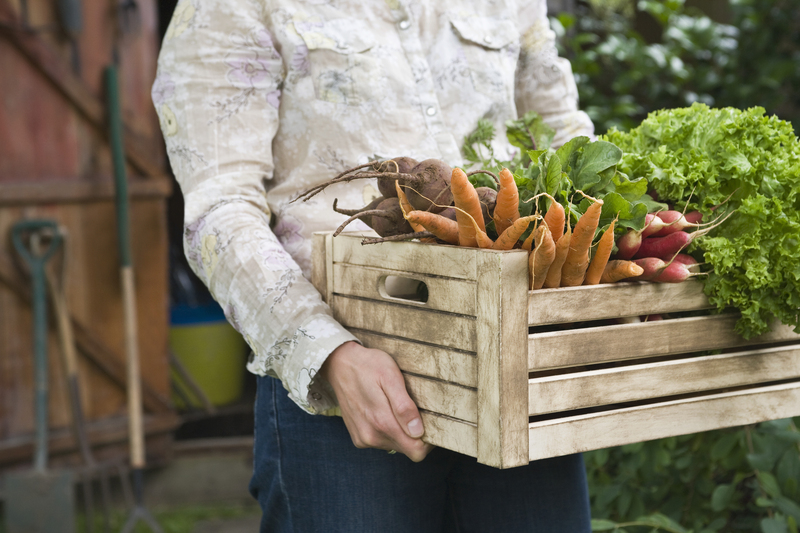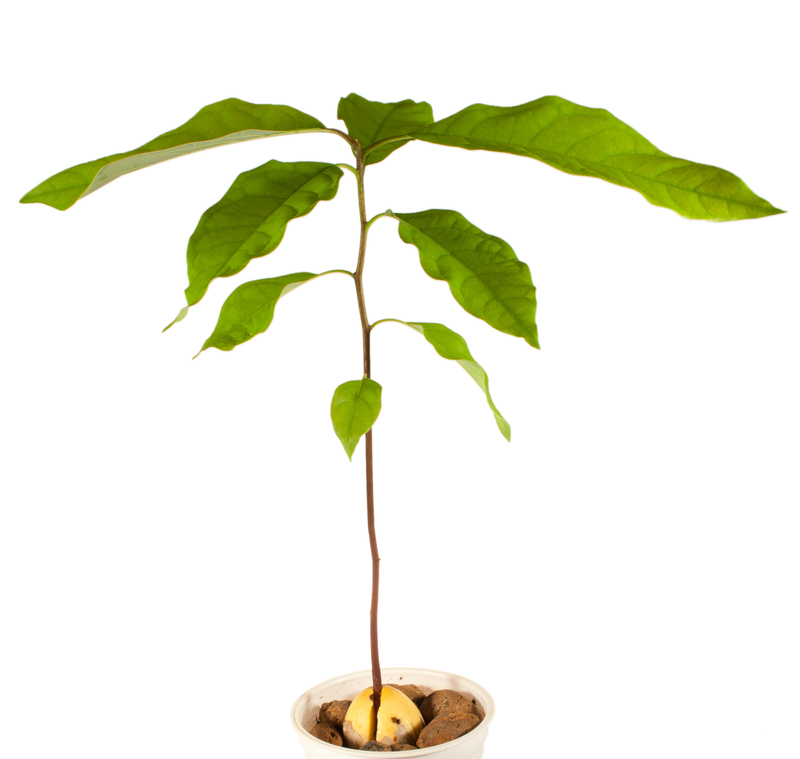Incorporate These Innovative Tips for Weed Management
Posted on 03/09/2025
Incorporate These Innovative Tips for Weed Management
Weed management is a persistent challenge for gardeners, farmers, and landscapers alike. As new weed species emerge and traditional techniques lose their effectiveness, it becomes essential to adopt smart, effective, and sustainable strategies. Want to revolutionize how you deal with unwanted plants? In this article, we'll unveil innovative weed management tips, blending the latest research with time-honored wisdom, and optimized for your success!

Understanding the Importance of Modern Weed Management
Effective weed control isn't just about aesthetics; it's about promoting the health and productivity of your crops or garden, safeguarding biodiversity, and minimizing labor. Traditional techniques like hand-pulling or heavy chemical application are not always the best solution. Today's innovative weed management methods address environmental concerns, resistance issues, and economic sustainability for the long term.
Why Move Beyond Traditional Weed Control?
- Resistance development: Over-reliance on herbicides leads to herbicide-resistant weeds.
- Environmental impact: Chemicals can contaminate soil and water, affecting wildlife and human health.
- Costs and labor: Manual methods require large investments of time and energy.
- Soil health: Harsh treatments can damage beneficial microorganisms in the soil.
To maximize the yield and beauty of your green space, it's crucial to implement innovative approaches to managing weeds. Let's explore these cutting-edge solutions!
Cutting-Edge Tips for Weed Management
1. Embrace Cover Cropping Techniques
Cover crops are non-cash crops (like clover, rye, or vetch) planted to blanket your soil. This living mulch outcompetes weeds for light, nutrients, and space. But there's more:
- Suppresses weed germination and growth by limiting sunlight to weed seeds.
- Enhances soil quality by adding organic matter and nutrients.
- Prevents soil erosion and retains moisture.
Tip: For ultimate weed suppression, plant dense, fast-growing cover crops right after harvests or between rows in vegetable gardens.
2. Utilize Organic Mulching Methods
Organic mulches--such as wood chips, straw, shredded leaves, or compost--form a physical barrier that blocks weed growth, keeps soil moist, and improves soil fertility as they break down.
- Smother weed seedlings by depriving them of light.
- Enhance root environments for your desirable plants.
- Promote beneficial insects and microorganisms in the soil.
Apply mulch 2-4 inches deep around plants, making sure not to pile it directly against stems to avoid rot.
3. Precision Flame Weeding
Flame weeding uses specialized propane torches to expose weeds to brief bursts of intense heat. This causes the cells in the weeds to rupture and the plant to die. Key advantages:
- No chemical residues in soil or food crops.
- Effective for young weed seedlings, especially in organic farms.
- Reduces labor intensity compared to hand-pulling.
Note: Flame weeding is most effective when weeds are small. Use caution in dry, fire-prone areas.
4. Practice Crop Rotation and Companion Planting
Rotating crops and integrating companion planting are sustainable weed management methods. Changing the crops grown in a plot annually interrupts weed cycles and keeps them off-balance.
- Minimizes persistent weed establishment.
- Restores soil nutrients and microbial diversity.
- Some plant combinations (like marigolds with tomatoes) can deter weeds and pests naturally.
Plan your rotations and companion pairings a year in advance for best results.
5. Harness Weed-Suppressive Plant Varieties
Certain plant species or cultivars have natural allelopathic properties--they release chemicals that inhibit nearby weed growth. For example, ryegrass and buckwheat are known to suppress weed germination.
- Allelopathic rye: Provides strong natural weed control, especially in winter cover crops.
- Buckwheat: Quick to establish, shades out weeds, and improves phosphorus availability in soil.
Integrate these varieties as cover crops or part of your cropping system for ongoing weed suppression.
6. Solarization for Sterile Soil
Soil solarization involves covering moist soil with clear plastic during the hot season. The sun's heat builds up under the plastic, killing weeds, seeds, and many soilborne pests.
- Eco-friendly weed eradication requiring no chemicals.
- Improves soil health by reducing pathogens.
- Best suited for garden beds or high-value crops.
Tip: Leave plastic in place for 4-6 weeks during the hottest part of the year for maximum effectiveness.
7. Smart Use of Geotextiles and Landscape Fabrics
Modern geotextiles--woven or non-woven fabrics--are engineered to allow water and air exchange while blocking weed growth. Installed under mulch or gravel, they provide a long-lasting barrier in ornamental beds, paths, or around trees.
- Reduces weeding labor for years at a time.
- Minimizes herbicide requirements.
- Prevents root competition in decorative landscapes.
Choose UV-stabilized products for durability, and avoid using plastics that completely block moisture.
8. Targeted Herbicide Application via Spot Spraying
For situations where herbicides are necessary, shift to spot spraying instead of broad, blanket applications. New applicators allow precise delivery only to problem areas, dramatically reducing chemical use.
- Less environmental impact.
- Reduces herbicide resistance risk.
- Cost-effective, with less waste.
Bonus: Opt for biodegradable or organic-approved herbicides whenever possible for a sustainable weed management strategy.
Leveraging Technological Innovations for Weed Control
9. Robotics and AI in Weed Detection
The future of weed management is arriving fast! Robotics and AI-powered weeders use cameras and onboard computers to distinguish between crops and weeds. They can mechanically remove weeds or apply micro-doses of herbicides only where needed.
- Reduces manual labor dramatically.
- Improves accuracy and efficiency.
- Can operate day and night for continuous weed suppression.
Example: Autonomous robots like the WeedBot or "see and spray" drones are in early use on large farms and becoming more accessible each season.
10. App-Based Weed ID and Record-Keeping
Emerging weed ID apps use smartphone cameras and AI to rapidly identify problem species. With geotagged data and automatic logs, these tools aid in tracking weed outbreaks, planning treatments, and sharing data with agronomists or extension services.
- Faster diagnosis and targeted response.
- Improved understanding of weed life cycles for timely intervention.
- Supports community-based weed management efforts.
Try apps like PlantNet, iNaturalist, or PictureThis to bolster your weed management toolbox!
Sustainable and Organic-Innovative Weed Management Techniques
11. Encouraging a Diverse Ecosystem
Nature abhors a vacuum. By maximizing plant diversity in your garden or farm, you crowd out invasive weeds while supporting natural pest predators and pollinators. Diverse cropping systems are less susceptible to monoculture weed invasions.
- Intercropping vegetables, herbs, and flowers throughout your plot.
- Establishing pollinator strips and perennial borders for resilience.
- Encouraging ground covers and low-growing legumes in otherwise bare soil.
12. Mechanical and Manual Innovations
While hand-weeding will always have a place, innovative manual tools like oscillating hoes, wheel weeders, and flame weeders make the job faster and less back-breaking.
- Time-saving designs reduce labor.
- Less soil disturbance compared to traditional tillage.
- Ideal for organic farms and small-scale plots.
Tip: Weed early and often before weeds set seed to minimize future infestations.
Integrated Weed Management: The Winning Approach
One takeaway from modern research: No single weed management method is universally effective. Instead, Integrated Weed Management (IWM) combines mechanical, biological, cultural, and chemical strategies, tailored to your unique setting.
Benefits of an Integrated Approach:
- Reduces reliance on any one method, lowering risk of resistance and environmental harm.
- Combines strengths of each technique for maximum control.
- Promotes long-term sustainability for your crops and landscape.
For example, combine mulching and cover crops with periodic spot herbicide treatment and manual dexterity for the truly stubborn patches. Monitor results, keep detailed records, and adjust your plan seasonally for optimal results.

Common Mistakes to Avoid in Modern Weed Management
- Ignoring weed lifecycle timing: Late interventions allow the next weed generation to seed. Tackle weeds when young and before flowering.
- Over-reliance on a single tactic: This leads to resistance and diminishing returns over time.
- Applying barriers incorrectly: Too little mulch, poorly installed fabric, or gaps invite persistent weeds.
- Skipping regular monitoring: Regular scouting is essential to identify new problems before they escalate.
A proactive and diversified prevention approach, rather than only reacting post-infestation, ensures the best results.
Conclusion: Outmaneuver Weeds with 21st Century Strategies
Innovation is vital if you want to stay one step ahead of those resilient weeds. By incorporating these innovative tips for weed management, you build a resilient, cost-effective, and environmentally responsible system--whether you're a backyard gardener or running a large farm operation. Prioritize prevention, adopt modern tools and techniques, and always aim for a diverse and balanced ecosystem.
Ready to take your weed control efforts to the next level? Whether it's embracing robotics, deploying clever cover crops, or leveraging precise spot-treatments, the right combination of new tactics awaits you. Start today, and watch your crops and landscapes thrive--weed-free and worry-free.
Have you tried any of these innovative weed management tips? Share your experiences or your own solutions in the comments below--let's outsmart weeds together!



